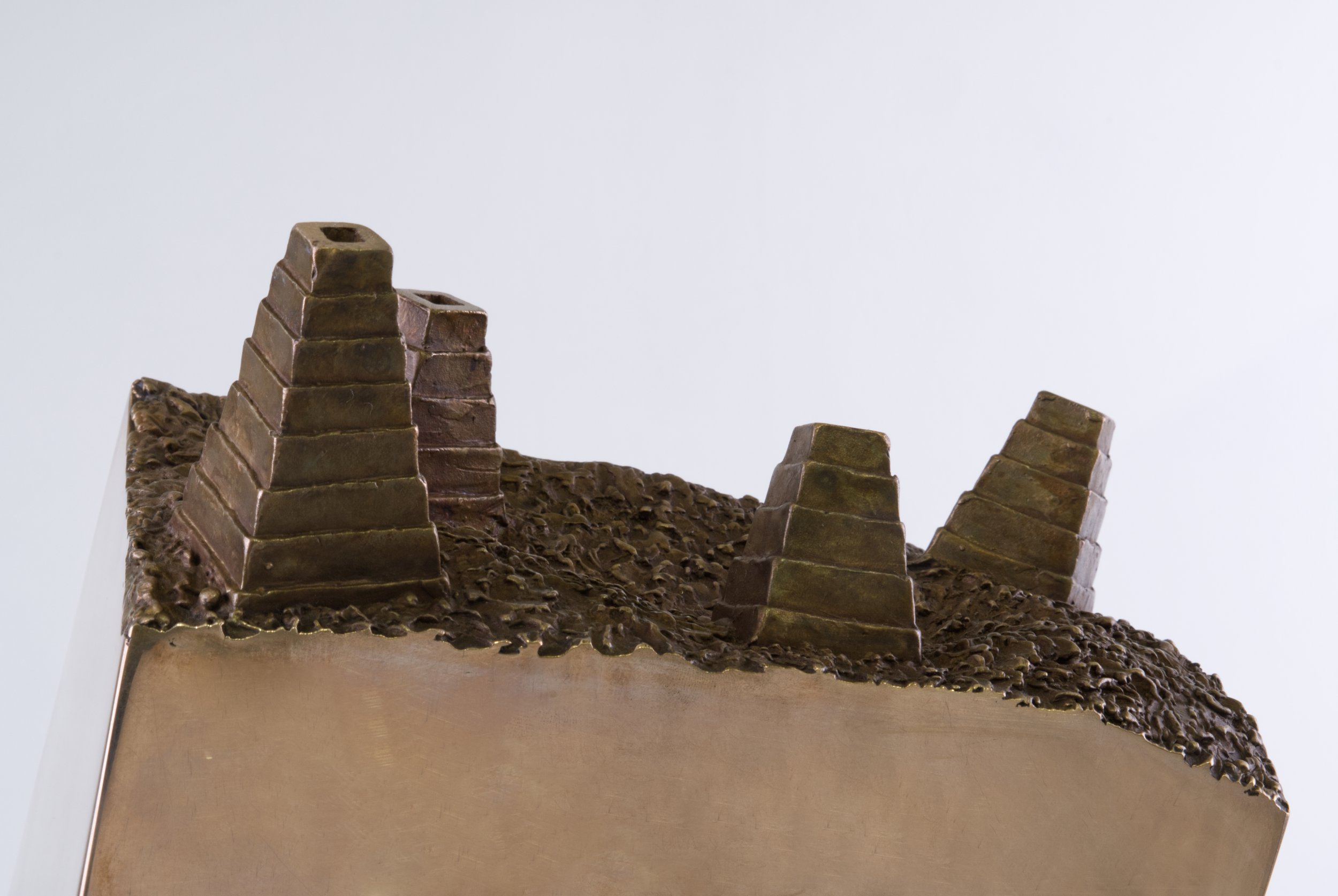
Slice
2023
7.5” x 9“ x 11”
Cast Bronze
Slant
2023
12” x 9.5 x 8.5”
Cast Bronze
Section
2023
15” x 4.75” x 12.25
Cast Bronze
Remnant
2023
8” x 3” x 9.5”
Cast Bronze
ALEXANDER YOSHIKAWA
-
Alexander Yoshikawa's artistic journey began as a child accompanying his photographer father, who was documenting San Francisco murals. From him, Alex learned the importance of waiting patiently for the right light and right moment for creating a photograph.
At age 11 he enrolled in Sharon Art Studios in San Francisco’s Golden Gate Park, where he learned about stained glass, glass fusing, and ceramics. He became a youth worker in the program, learning more about glass, and about teaching. After further studies teaching at UC Davis Craft Center, he returned to the Bay Area and enrolled in a San Francisco City College multimedia sculpture class taught by Stephanie Robison. The experience inspired him to work as an intern for Robison, finishing surfaces of her marble sculptures. In that role in 2014 he met Splady, who was fabricating metal bases for Robison’s sculptures. Yoshikawa began working with and learning from Splady in 2016.
With the onset of the COVID pandemic, Splady and Yoshikawa took advantage of the downturn and isolation by reorganizing the atelier, and by setting up and equipping a new foundry, which had its inaugural bronze pour in 2020. Along the way, Yoshikawa found himself drawn to the ancient art of sculpting in wax for bronze casting, and now enjoys exposing artists to these techniques and skills.
-
-
My work explores the space between what is lost and what remains. Through cast bronze and fabricated metal forms, I engage with ideas of erosion, absence, and imagined history—creating objects that feel both ancient and abstract.
Each sculpture begins as an experiment in form and surface: rough textures suggest decay and time, while polished planes act as interruptions—moments of clarity, reflection, or deliberate construction. I’m drawn to the tension between precision and ruin, artifact and invention.
Rather than recreating history, I fabricate fragments of something unknown. These pieces are not meant to explain, but to evoke—offering glimpses of structures, tools, or ruins that never existed, yet feel strangely familiar. In this way, my work sits at the edge of recognition, asking the viewer to imagine what once was—or what could be.

